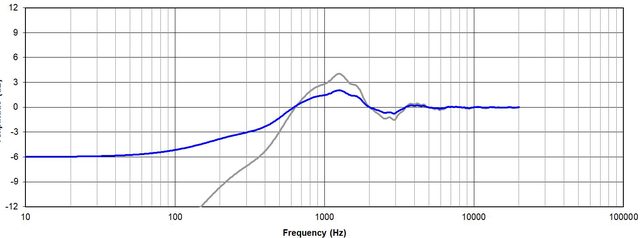say it as it is
pfm Member
I think your work is amazing kind of in aw as way above my skill level. I admit to getting lost in the details bit above my head. If DIY speakers are like DIY power amps I'd love a pair
I think your work is amazing kind of in aw as way above my skill level. I admit to getting lost in the details bit above my head. If DIY speakers are like DIY power amps I'd love a pair
Completely agree with this, and appreciate the large amount of effort involved in disassemble, cut, reassemble, test measure; repeat- and all controlled enough to pick up the small nuances in each change.I'm quite intrigued at what you're doing, but have been watching it silently, as I couldn't think of anything useful to add the to the conversation. I'm hoping to proceed on a build soon myself, so I'm always keen to see how others are proceeding.
I'm sure there are many other lurkers like me, so please continue to include us as avid audience members in your journey.
Completely agree with this, and appreciate the large amount of effort involved in disassemble, cut, reassemble, test measure; repeat- and all controlled enough to pick up the small nuances in each change.
Keep going Mat! It's great stuff. ATB.
Tumbleweeds go with the territory Matt, at least no one has hijacked on your thread by posting about their own project...
You looked like a man with a mission so I've chosen to step back and watch how it plays out though it did occur to me to maybe chose a tweeter that could come in a bit lower to mitigate the 2 mid hf peaks....
Also, DIYAudio might be a better forum to have interactions with more people who know what you're doing. DIY kind of seems like a vestigial appendage on the side of PFM. PFM seems to be more about British products, politics, how to throw away money on something new you didn't know you needed, and MQA.
But that’s like dropping your keys in a dark alley and looking for them under a streetlight.PFM just feels more like home to me.
... I sometimes think I might put up a pic of a project and then @booja30 shows us his Sansui rebuilt and I think 'maybe not'!
By the way can you link to anything more on the sealed box exhaust idea? I'm trying to get my head around what's happening there.
DIYAudio a bit daunting to post a project on as they are all so far ahead,
I see Dickason suggests a 2.3khz xover point.The Wavecore TW030WA12 can be crossed surprisingly low, and I'm not sure if there's anything out there that can be crossed lower. Maybe the Seas T35C002 could? but it's not cheap. The datasheet says the Wavecore is usable down to 1.5khz, but although crossing that low helps reduce the Faitals breakup, it doesn't eliminate it.
I'll do some distortion and off-axis response measurements when I get a chance. Unfortunately I didn't do that to the unmodified drivers, but I can compare to Vance Dickasons measurements - https://audioxpress.com/article/test-bench-faital-pro-6rs140-midwoofer-midrange
I see Dickason suggests a 2.3khz xover point.
I don't believe that the benefits of an open baffle speaker are due to the sound bouncing around all over the place causing dips and peaks due to sounds being in and out of phase. I believe it's because the motor (magnet power) isn't fighting against the air pressure inside the enclosure. To make things worse, most speakers designed for sealed enclosures have a high Qes (weak motor).
so try not to go too wide band with them.

